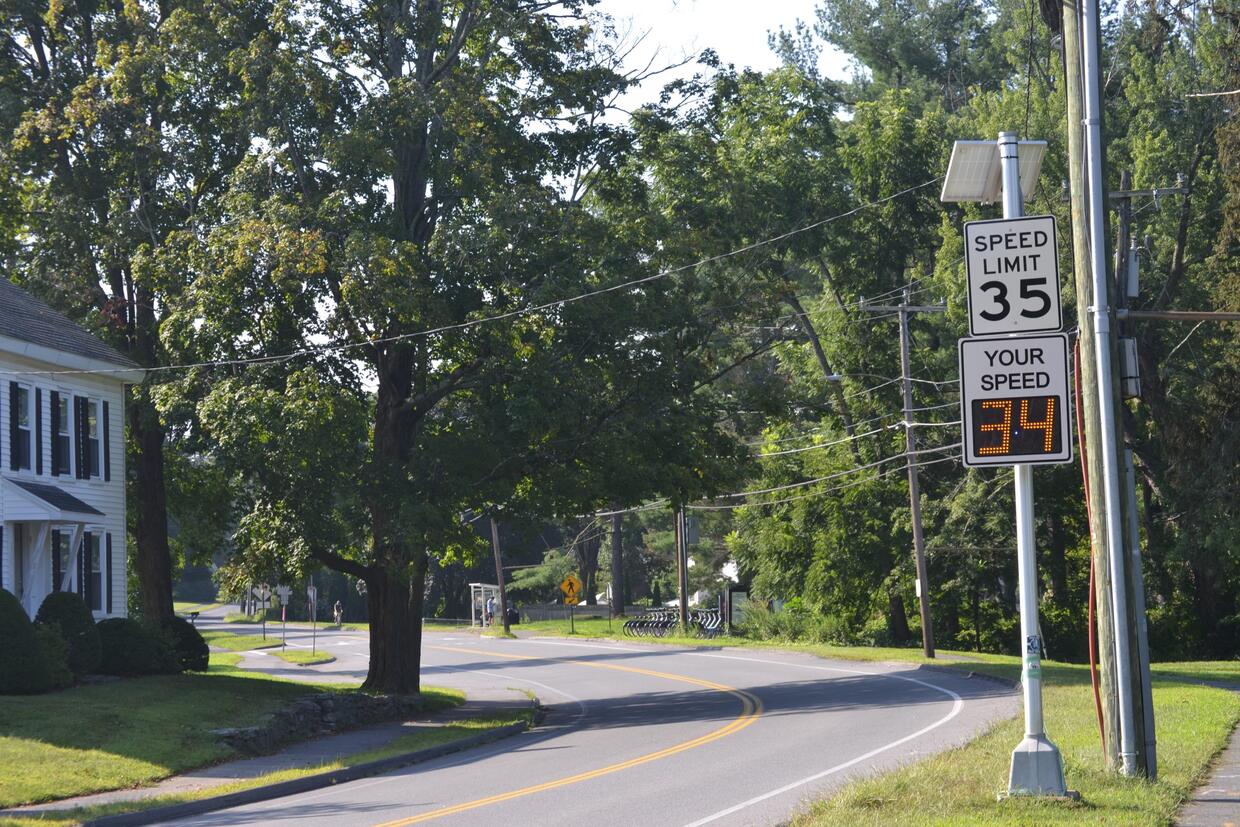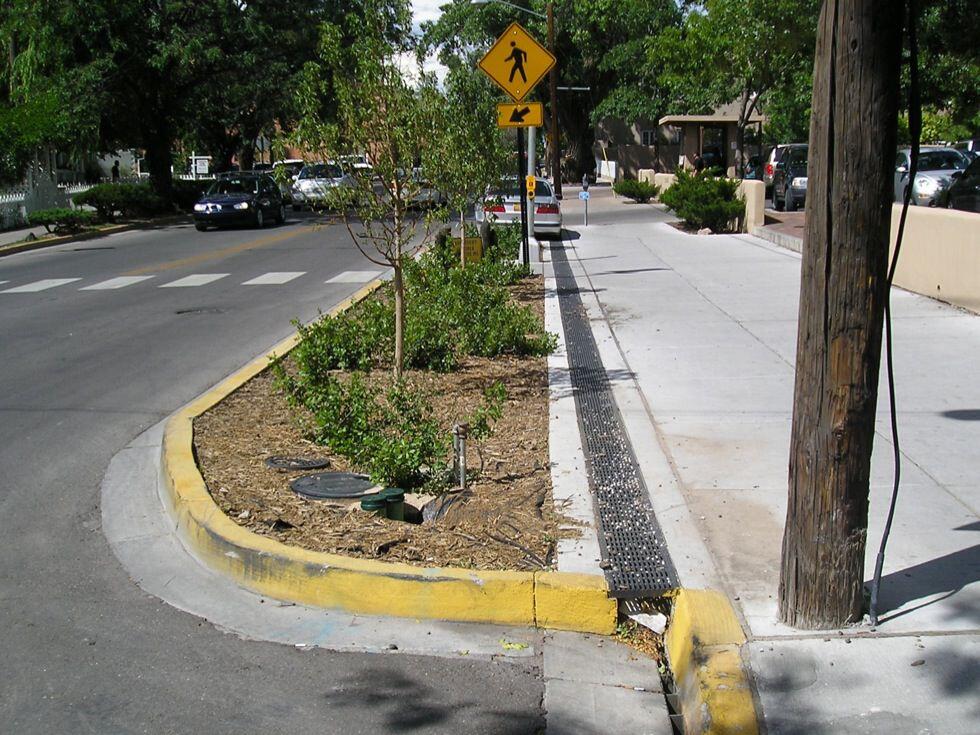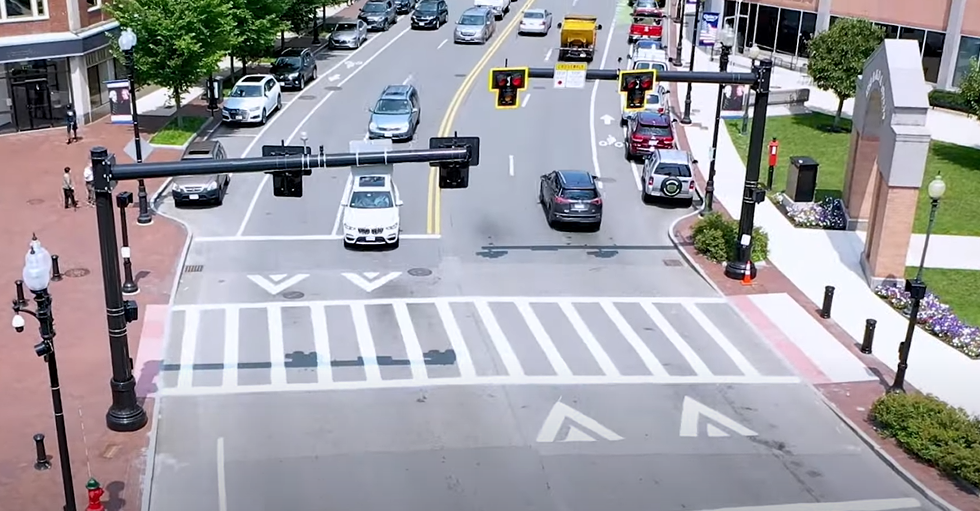A transition zone is a series of measures placed over a distance to help drivers recognize that the roadway environment is changing—for example, from a rural to a suburban or urban area. This gives the driver enough time to reduce speed before entering the new zone.
The goal of advisory and feedback speed signage and other countermeasures—such as curb extensions, raised crosswalks/intersections, raised medians, and landscaping—should be to incrementally reduce vehicle speeds.
In order to be most effective, speed transition zones should be used before other speed management treatments are attempted.
Here are some common approaches to speed transition zones:
Features
| Signage | Horizontal & vertical elements | Enhanced crosswalks |
|---|---|---|
Common transition signs include reduced speeds ahead, pavement markings (such as optical speed bars and narrower lanes), regulatory or advisory speed limit signs, and speed feedback signs in strategic locations that alert drivers to their speed. It is recommended that speed feedback signs be used alongside a regulatory or statutory speed limit signage to give context, and show drivers their speed in relationship to the legal speed limit. Note: If you are using a statutory speed limit sign rather than regulatory, the speed feedback sign posted with it must have a yellow border. | Within transition zones, horizontal features such as curb extensions and median islands convey a changing cross-section, while vertical measures, including speed bumps or raised pedestrian crossings, create natural speed reductions. | Typical crosswalks can be enhanced with high visibility crosswalk markings with colored pavement, a raised pedestrian crosswalk, pedestrian signage in the roadway, or a rectangular rapid flashing beacon. |
Costs & considerations
| Feature | Estimated cost | Percent speed reduction |
|---|---|---|
| Dynamic speed feedback signs | $2,000 to $12,000 per display; varies based on design and duration. | 2-17% |
| Reduced speed limit signs | $250-$1,000 per mile | N/A |
*Note: Estimates are based on past projects and commonly used materials, and may vary depending on roadway condition, location, time, and other factors. The speed reduction percentages were sourced from FHWA's Engineering Speed Management Countermeasures Table linked in the resources below.
Potential speed benefits
Speed transition zones, advisory, and feedback signage have been found to effectively reduce the speed most people drive on a road. In one analysis, signage and landscaping were found to reduce the 85th percentile speed by 7 percent at a neighborhood’s entrance. (FHWA Speed Management Toolkit: Table 4)
These measures can also offer additional safety benefits. In one FHWA speed feedback study, transitional signage was associated with a much greater decrease in crashes per quarter versus control sites without the signage. Separately, a before-and-after study of driver feedback signs on urban roads showed a 23 to 45 percent reduction in collision severity. Notably, driver reaction data also show that such signs are more impactful on non-workdays, when traffic volume is generally lighter, than on workdays.
Visit the FHWA table on potential speed reduction for more information. While this data is all collected under differing circumstances and in different environments (volume of vehicles, rural vs. urban areas, etc.), it is still a helpful gauge for what each countermeasure can do.
Learn more about speed transition zones
When considering speed transition zones, advisory, and feedback signage, it’s important to keep in mind the MassDOT Project Development Guidelines (Chapter 16). These are very specific design policies and standards you’ll need to adhere to, so that any changes you make meet federal and state guidelines.
For example:
- Minimum letter height for changeable message signs should be 18 inches on roadways with speed limits of 45 mph or higher, and 12-inches for roadways with speed limits of less than 45 mph.
- Speed limit signs have a minimum letter height of 4 inches.
- The static portion of radar speed feedback signs should have a yellow background with black “YOUR SPEED” letters, and the changeable message portion should have a black background with yellow LEDs.
Many of these details are included in Chapter 16 of our guide.
You can find more information about speed transition zones, advisory, and feedback signage in these resources:
- City of Alberta - CA
- FHWA ePrimer
- NCHRP Report 737: Design Guidance for High-Speed to Low-Speed Transition Zones for Rural Highways
- FHWA Speed Management Countermeasures
- MassDOT Speed Zoning
- FHWA Setting Speed Limits
- Engineering Countermeasures for Reducing Speeds - Safety | Federal Highway Administration


